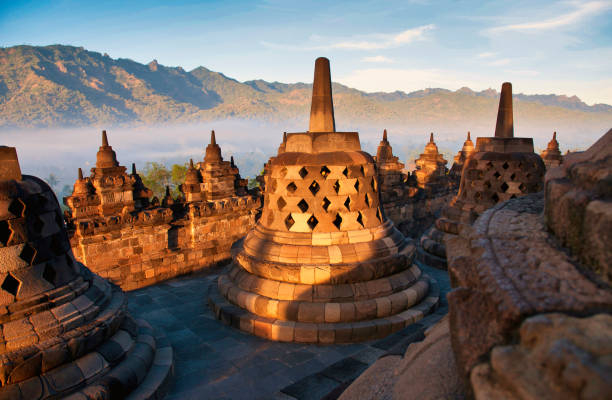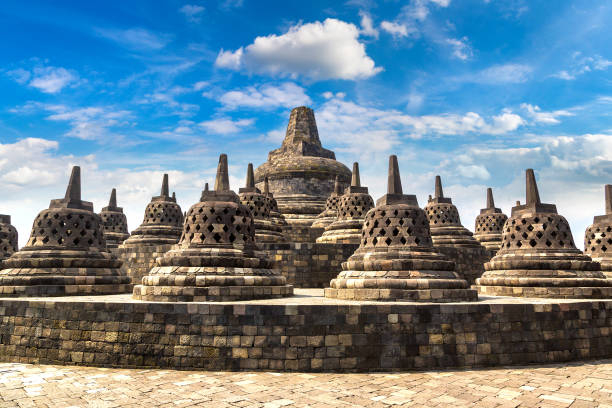Borobudur
The biggest Buddhist temple in the world is called Borobudur, located in Indonesia. It was built out of an amazing two million slabs of volcanic stone. It dates back to the ninth century and finally fell into ruin before being rediscovered in the nineteenth century. It has since been brought back to its previous splendor and is especially well-liked around dawn. Six square platforms with three circular platforms on top make up the Borobudur monument. The realm of forms, the world of formlessness, and the three levels of the Buddhist cosmology are steps on the journey to enlightenment. It is embellished with more than 2,000 reliefs and 500 sculptures of Buddha, each of which outlines a Buddhist doctrine.
Evidence shows that Borobudur was built in the ninth century and then abandoned after the fall of Java's Hindu kingdoms in the fourteenth century and the conversion of the Javanese to Islam. Sir Thomas Stamford Raffles, the British emperor of Java at the time, was informed of its location by native Indonesians, which led to the spread of information of its presence throughout the world in 1814. Borobudur has now undergone several renovations in order to be protected. Between 1975 and 1982, the Indonesian government and UNESCO undertook the greatest restoration effort, which was followed by the monument's designation as a UNESCO World Heritage Site. The biggest Buddhist temple in the world, Borobudur is one of Southeast Asia's most significant archaeological monuments, along with Angkor Wat in Cambodia and Bagan in Myanmar.
Location: Magelang, Central Java

















